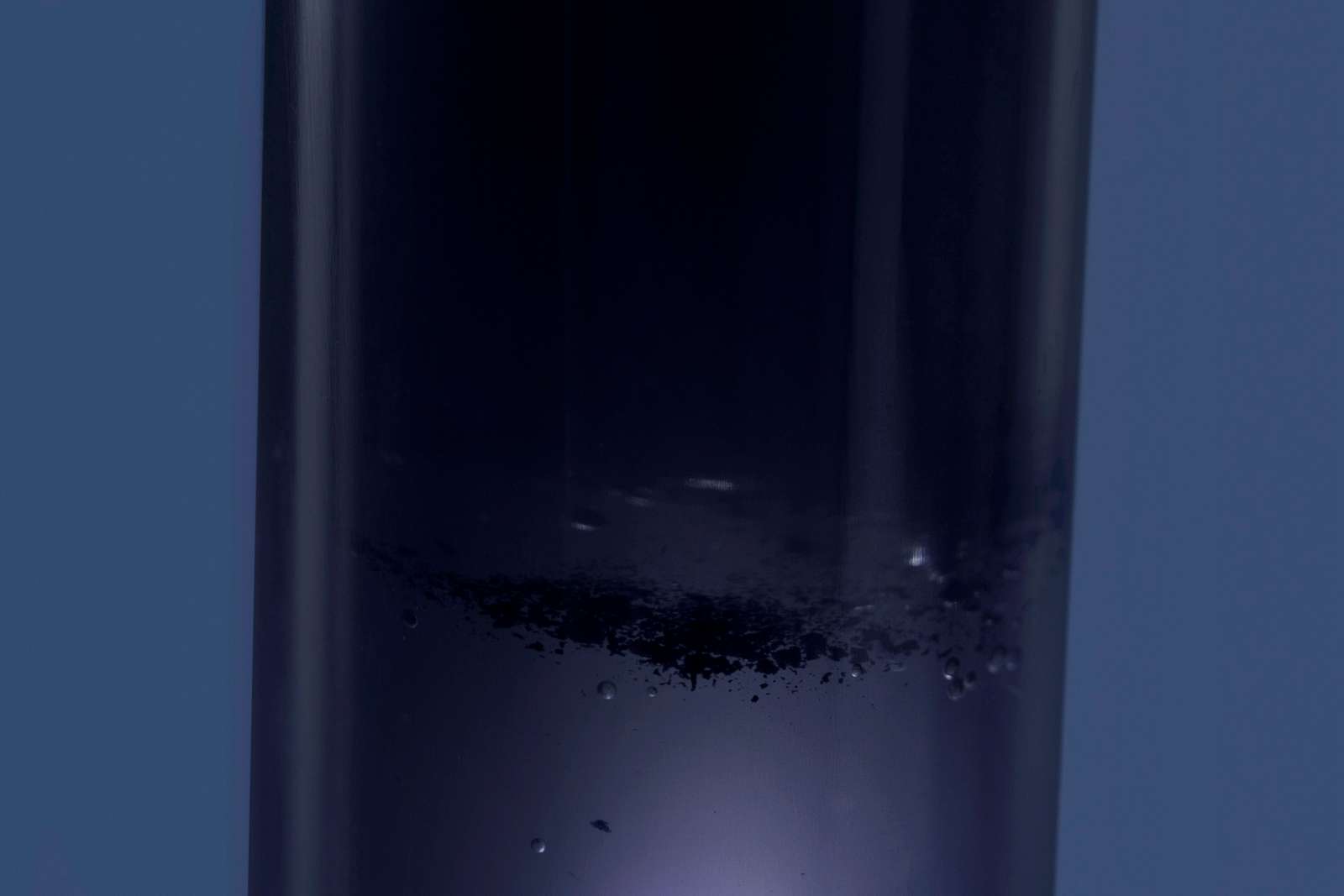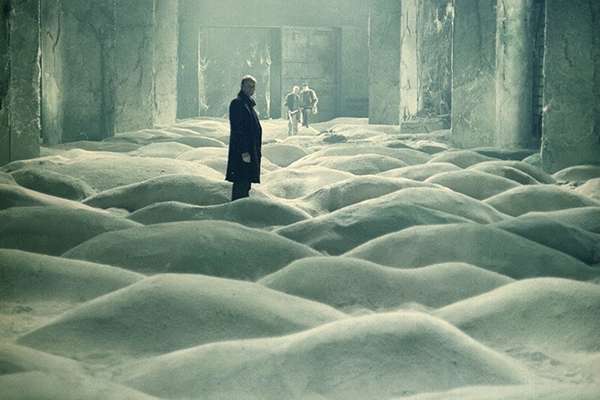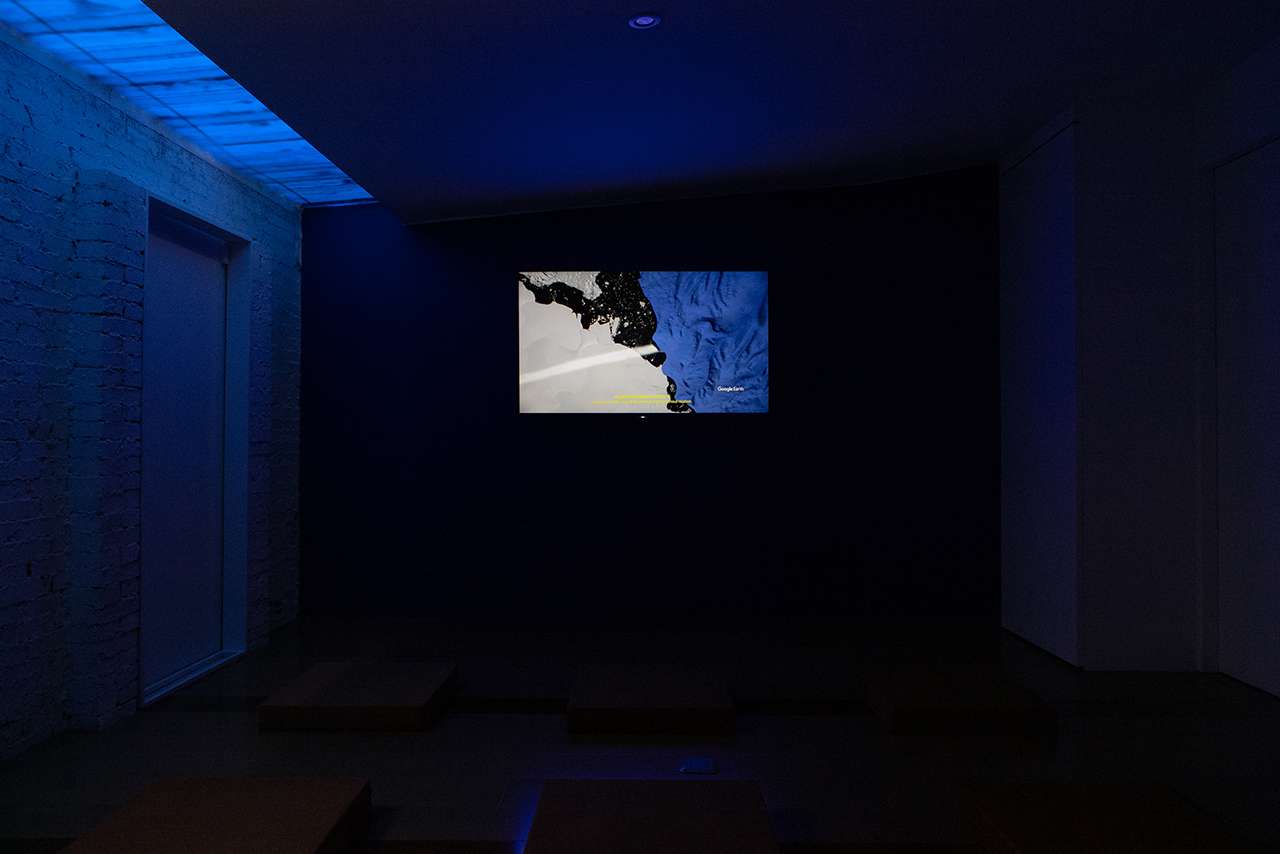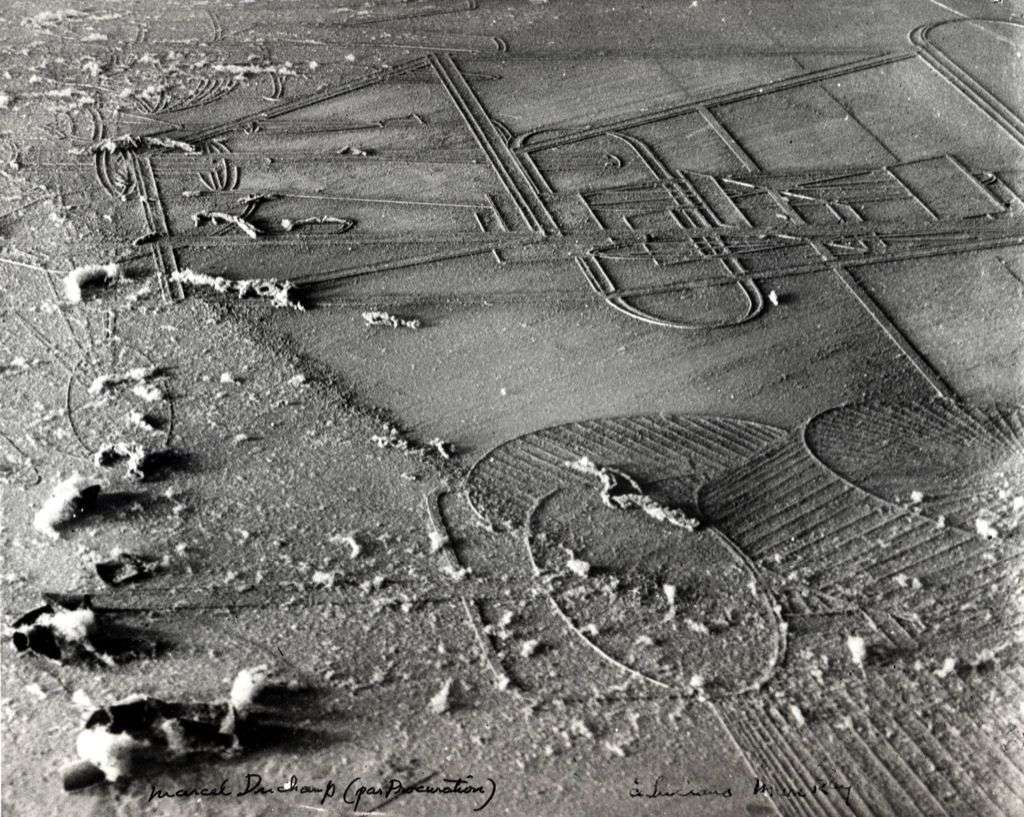
"We," are Dust and Noise
Trans|張新
"The storytellers have not realized that the Sleeping Beauty would have awoken covered in a thick layer of dust [...] Meanwhile dismal sheets of dust constantly invade earthly habitations and uniformly defile them." - Georges Bataille
People often overlook the fundamental conditions of everything as they focus their attention on the knowledge of modern civilization, and theorists since Foucault have devoted themselves to showing us how this cognitive system is constituted, and how humanities should not be taken for granted, or rather, how the things we see, sense and know are the product of various cultural conditions. Cultural studies and contemporary art aim to deconstruct these cultural conditions and raise awareness about linguistic, symbolic, and historical violence. However, in recent years, artists have moved away from the deconstruction of power structures such as culture and language (a method developed by conceptual art) and are turning towards operating the Mi Mi Mew Mew cosmoses.
Is It a Signal, or Noise?
Everything we see, know, and sense today is based on a "system of exclusion." In ancient Greece, this system is the voice of reason: only men were allowed to possess it, while women and slaves were seen as noise by the system. Fast forward to today — the age of Meta (Instagram or Facebook) — and it is the "face" that is identified, prioritized, and consolidated by this system as the definitive human feature; anuses and genitals are considered to be visual noise and must be excluded from the system without delay.[2] This “winnowing” process permits us to swiftly grasp the meaning of things and establish a hierarchical order, yet it also forcefully reinforces the existing system of clarity and filters out all the noise. And oftentimes, Mi Mi Mew Mew is the noise that must be excluded by the voice of legitimacy.
Noise includes political issues that often appear in contemporary art exhibitions and international film festivals (refugees, immigrants, migrants, diaspora, LGBTQ, and people whose identities are difficult to anchor); however, as these issues are gradually consolidated, noise also seems to be co-opted by the political system. While major international biennales rarely miss out on these major topics, they likewise cannot avoid the problem of the exploitation of minority identities.
However, as Rancière suggests, the political is not chiefly about the political correctness of advocating for minorities, but about the radicality of the "operation"; not making the other (noise) visible, but allowing it to challenge our framework of the sensible and to speak for itself. This does not mean that artists should come to represent the other; instead, artists should function as "moderators" and help bring forth these hidden voices.
Hence, the political is not about the political correctness of the issue at hand, but about finding ways to "operationally" underline the noise and dissensions that cannot be easily absorbed by the system, an operation that is both political and aesthetic. To uncover the dust, considered often to be background noise, is precisely to challenge our usual practices and customs.

The Knowledge Operation of Dust
Returning to the overall ambient and spatial experience, the grand prize of the Taipei Art Awards 2021 challenges the praxis of addressing major issues. In their award-winning Ambient Extraction: sedimentary soundscapes in dust, artists Yen-Chun Lin and Aloïs Yang employ live installations to express their concern for "alternative knowledge production." This alternative system not only exceeds the human perspective (trapped in the aforementioned predicament of political correctness) but also examines the absolute objectivity contained within "dust" knowledge.
In a dark exhibition room filled with a faint purple radiance: slender sculptures attached with sound-recording, radar-like objects. A large sculpture is placed in the middle, fitted with a TV set; apocalyptic scenes of nature devoid of humans are playing on its screen. Sounds rise and fall in the room, evoking a sense of intimate enclosure: doomsday volcanoes, flowing rivers, and absolute silence (with bass frequencies). Through a glass lens, light reveals the invisible protagonist of this space: dust.
Dust, often regarded as noise by the human subject, paradoxically and inversely becomes the subject that "shapes the spectator" through the reverberations of sound monitors (uniting invisible dust with ambient sounds). Recalling “the Zone" in Andrei Tarkovsky's Stalker, the region of human civilization in decline, we enter a space filled with dust, which encourages us to reflect on our own existence. However, in contrast to the damp, tattered sense of nostalgia in Tarkovsky's film, the installations in the exhibition room are cold and disinterested, like scientific detectors. This cold atmosphere creates an interesting tension with the romantic inner universe.

The "Atemporality" Neglected by Human Time
Unlike the historical archival research or scientific experiments (based on empirical data of the past), dust objectivity and future archeology, declared by the artists, are at once scientific, historical, and aesthetic; they transform cognition into an "ambient experience," escaping the shackles of linguistic cognition, and is more concerned with regulating the invisible ambience, creating "tactile experiences" that exceeds pure visual cognition (by immersing the viewers’ senses and shaping them with dust soundscapes).
"Dust time" is unlike our human linear time. While linear time is often based on the exclusion of unstable temporality, dust time is more entangled, an unstable temporality in which the past is the future, the future is the past. Here, time is no longer the quantified physical time, but the inner durational time. Instead of referring to dust time as non-linear time (as the spectacle of consumption is also a non-linear time that incarcerates us), it may be better to describe it as "atemporal time": it is not the linear or non-linear time that privileges only human history, but a time in which species can coexist and the Umwelt is considered as a whole.
Furthermore, similar to how the artist Wu Tsan-Cheng introduced natural soundscapes into the art museum in his solo exhibition "10 - Taiwan Sound Map Project," Ambient Extraction also adopts natural sounds from the outside world as "ready-mades" and transfers them into the white cube. Nonetheless, in comparison with the natural sounds of Taiwan gathered by Wu, those of Ambient Extraction are collected from more unusual locations (namely, dust sounds from the British secret Atomic Weapons Research Establishment) and are combined into a complex sonic amalgam that evokes cosmic noise or apocalyptic cries.
Experiencing Sound and Ambience
In regard to creating acoustic ambience, whereas Su Yu Hsin explores in her work hibernatemode the alternative temporality of moss with the arrangement of image-sound-essay, the artists of Abstract Extraction focus on dust time. These "non-human" concepts of time greatly challenge our "human preconceptions of time" (linear or non-linear). The situation and the invisible air are now the foci of the experience, taking the place of the human voice.
Even so, we should still note that this sort of non-linguistic "situational experience" is very much in compliance with the neoliberal "experience economy." In the age of co-opted experiences, our feelings are constantly controlled by invisible situations, as we no longer consume visible, concrete objects (Deleuze's concept of "societies of control"). “Objects” are no longer exterior, but are transformed into the viewer's subjective experiences (when visiting a coffee shop, we are more often than not consuming the invisible experience itself). The difference is that, while neoliberal experiences are geared toward persuading people to consume feelings of self-satisfaction, turning experiences into commodities, artistic situational experiences are purposeless and directionless, encouraging people to contemplate their own existences and reflect on the world and the universe.

Dust Ambience in the Background
Abstract Extraction not only makes dust visible but also “makes it speak.” It brings dust to the visual foreground and uses it as “perceivable background noise.” Thus, the background is transformed from an inert material complementing the subject into vibrant life. The goal of Abstract Extraction is not to represent dust with imagery but to make perceptible the “information flow of dust” which had, until now, been relegated to the background.
Like noise, dust — suspended ambient particles that permeate the air — is endowed with a high level of "materiality" but often neglected or scorned by humans. While the modern code of hygiene and cleanliness prohibits artworks and commodities from being “contaminated” by dust (laboratories are likewise dust-free environments), artists strive to reverse this relationship by adopting the "environmental background" as their creative motives. This ethos can be traced back to Erik Satie's concept of furniture music in the 19th century, to John Cage's 4’33’’ and its move towards environmental sounds in the 20th century, and later to Brian Eno and his advocacy for ambient music.
From "Eschatological Dust" to "Vital Dust"
Ambience also has a close relationship with dust. From Man Ray’s Dust Breeding, a photograph of Duchamp’s The Large Glass, to the curatorial response to this work by David Campany, the photography exhibition “A Handful of Dust: from the Cosmic to the Domestic,” artists have often tackled the question of invisible dust. Building on Bataille’s theory of the ontological amorphousness of dust (cosmos), they indicate that “it [dust] embodies a cosmic time beyond human scope or hope. Returning eternally, dust will humble civilization.” [3] Compared with the speculative history of dust, the history of human civilization, while seemingly great and magnificent, is, in fact, only a drop in the ocean of time. [4]
Both Bataille and Campany consider the relationship between human impermanence and cosmic dust from the Christian eschatological perspective (ashes to ashes, dust to dust). By contrast, I would like to borrow the Buddhist concept of "huan chen" (幻塵, illusory dust) to propose a different perspective. Unlike Christian eschatology, fatalism and its view of human's inherent impermanence, or Buddhism's disapproval of earthly illusions, the illusory dust of art reappraises the phenomenal world, often taken for granted, to affirm the reality of virtual illusions and encourage us to reflect on the circulation, interweaving, and movement of dust particles. If, for Bataille, dust is a symbol of death, then "huan chen" is a symbol of circulation, life, vitality, ecology, and flow.
The stable world we perceive is limited by the scope of human speech. The amorphousness of “huan chen” reveals the underlying and true nature of things. It is not the romantic subject of idealism, nor the materialism of science, but the fundamental materialism that is “both materialistic and idealistic” — the cosmoses forever colliding with each other. The cosmoses in constant movement and the memories of dust in the air bring to mind a conjecture that the scientist Charles Babbage made in 1828, which prefigures and becomes the operational reality of Ambient Extraction:
"The air itself is one vast library, on whose pages are for ever written all that man has ever said or woman whispered. There, in their mutable but unerring characters, mixed with the earliest, as well as with the latest sighs of mortality, stand for ever recorded, vows unredeemed, promises unfulfilled, perpetuating in the united movements of each particle, the testimony of man's changeful will. "

The "We" of the Story
We, become dust everywhere.
We, lurk imperceptibly in the dark.
We, are like dissonance disowned by the melody.
We, are mixing into messages.
We, collide with air particles, merging with human dander, cat fur, viruses, saliva, and other suspended, inorganic matter.
We, morph into ambience and formlessness, no longer being the stable human subject, but the heterogeneous "we".
We, are no longer a community created by excluding others (anthropocentrism, xenophobic, stable communities such as the Nazis or Trump supporters), but the “we” that endorses the Other and changes with it, an unknown we.
We, are made by superimposing the dust of the past and the future. No longer the stable subject of linear time (only humans) but the “we” that incorporates various elements: dust from the big bang, meteorites, dinosaur bones, pollen, cellphone materials, the dead, and the unborn.
We, are the swarm, the flow, the field, the force, the meow, and the universe.
Notes
[1] Georges Bataille, ’Poussiere’ , Documents no. 5, 1929, p278-279.
[2] Furthermore, in his essay "Proxy Politics: Signal and Noise," the artist Hito Steyerl discusses this operational system of faces and anuses. Like dust, anuses are also noise that exists but is often obscured. https://www.e-flux.com/journal/60/61045/proxy-politics-signal-and-noise/
[3] 大衛・卡帕尼(David Campany)(陳珮瑄、李欣潔 譯)《塵與時:從宇宙到居所》。 台中市:國立臺灣美術館,2020。 頁174。
[4] The art historian Yve-Alain Bois once used Bataille's concept of dust to discuss how human architecture is doomed to extinction. Later, he also adopted the concept of "formlessness" by Bataille as the central motive for an exhibition he co-curated with Rosalind Krauss at Centre Pompidou. "Formlessness" is also a key concept of Mi Mi Mew Mew. Bois, Yve-Alain, and Rosalind E. Krauss. Formless: A user's guide. New York: Zone Books, 1997.
[5] Charles Babbage, The Ninth Bridgewater Treatise. 1828. https://victorianweb.org/science/science_texts/bridgewater/intro.htm
「現象書寫-視覺藝評」專案贊助單位:財團法人國家文化藝術基金會、文心藝術基金會